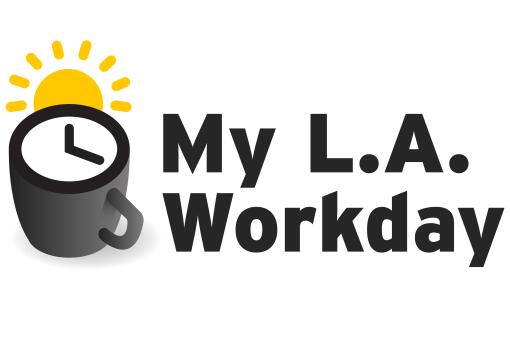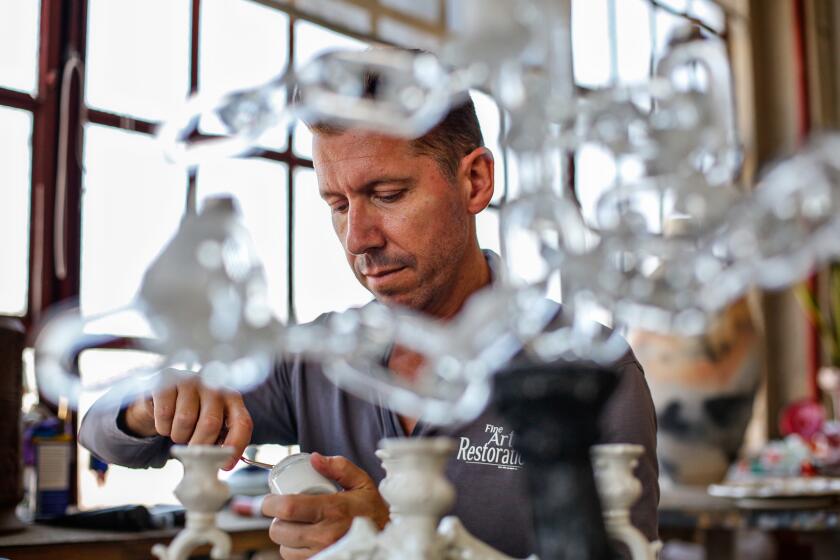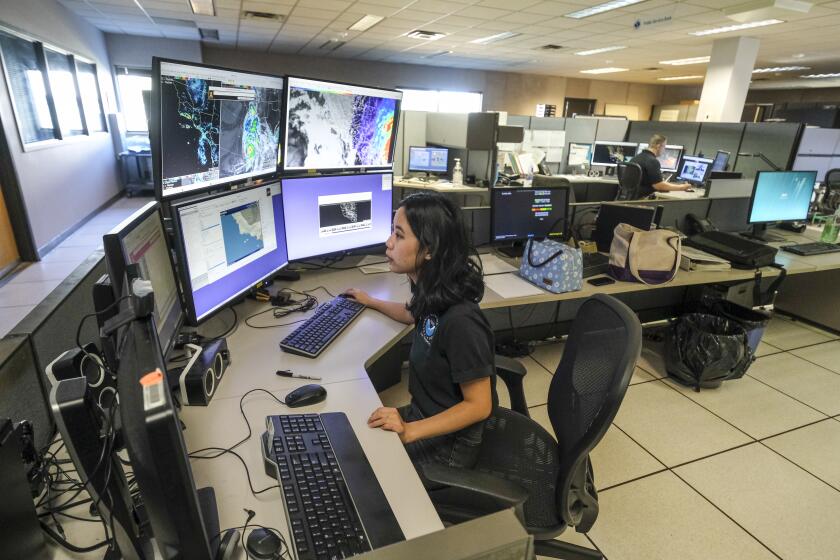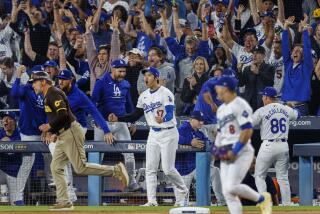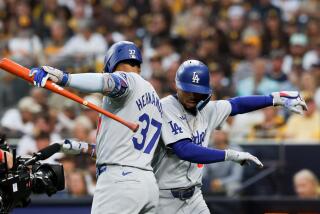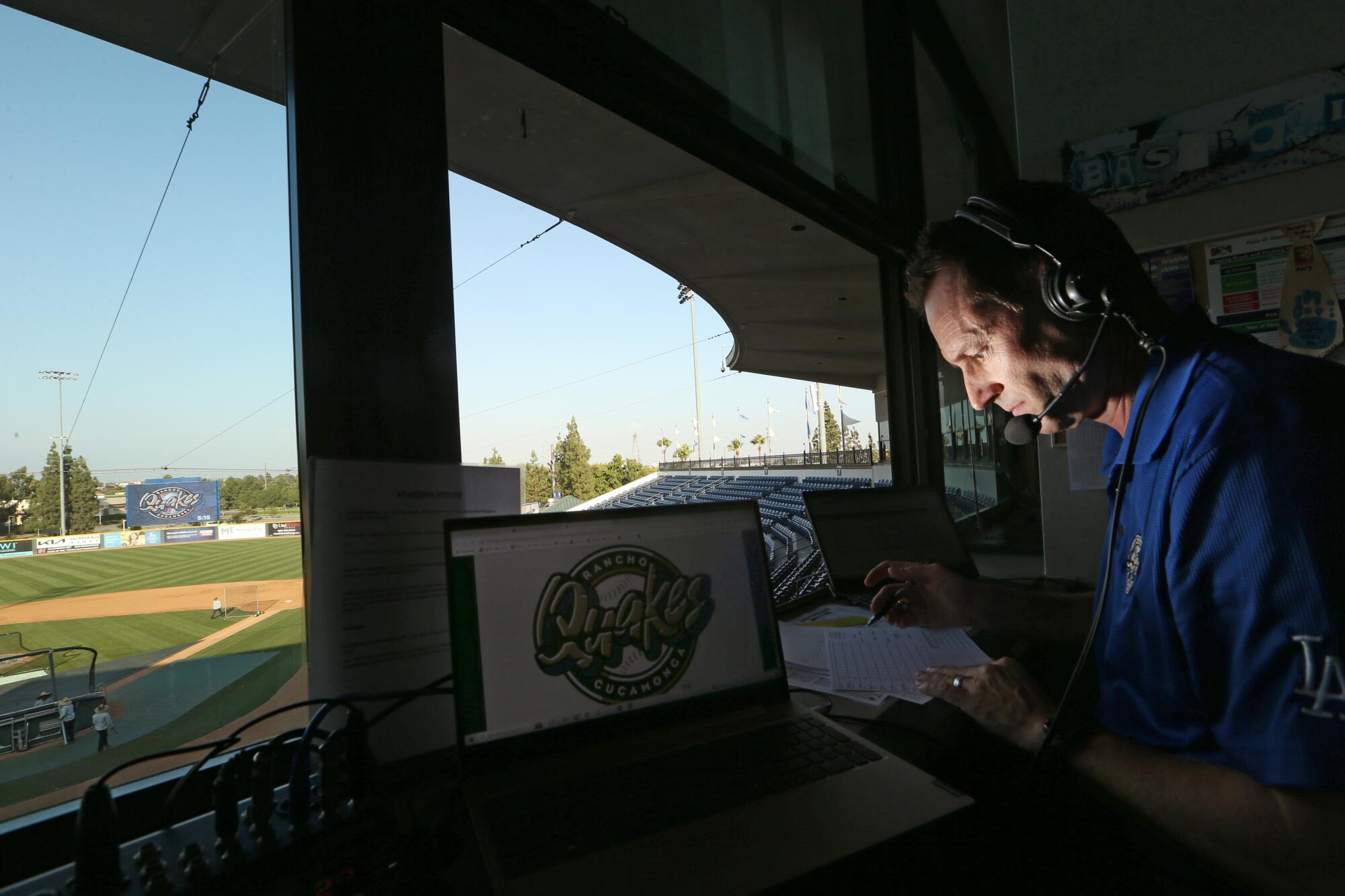
Welcome to My L.A. Workday, a series that takes you inside a day on the job with some of the city’s most fascinating people. Interviews are edited for length and clarity.
At the bottom rung of the Los Angeles Dodgers’ four-tier minor league baseball farm system sits the Rancho Cucamonga Quakes, and for 14 years Mike Lindskog has been its public relations manager and “the Voice of the Quakes,” broadcasting the teams’ games on iHeart Radio and the TuneIn app.
Ever wonder what a baseball broadcaster does? For Lindskog, 49, the answer is “everything,” without the small army that makes a Major League Baseball broadcast happen. Lindskog estimates that what big-league broadcasters earn in a few games, he will earn in an entire season.
“I just love the game,” Lindskog said. “I live and die by adrenaline, and so getting up for these games is so very easy.”
BUSINESS
What do you do for work?
That’s the question My L.A. Workday answers. The series takes you inside a day on the job with some of the city’s most fascinating people. Interviews are edited for length and clarity.
Dodgers stalwarts Will Smith and Gavin Lux both wore Quakes uniforms not that long ago, and pitching legend Clayton Kershaw has taken more than one rehab tour through LoanMart Field.
With the help of one assistant, Lindskog writes and edits the game day program for fans. He writes up a fact sheet for coaches that looks like something from a Wall Street analyst. He’s his own audio engineer in a broadcast booth so close to the seats that fans come calling, even between innings.
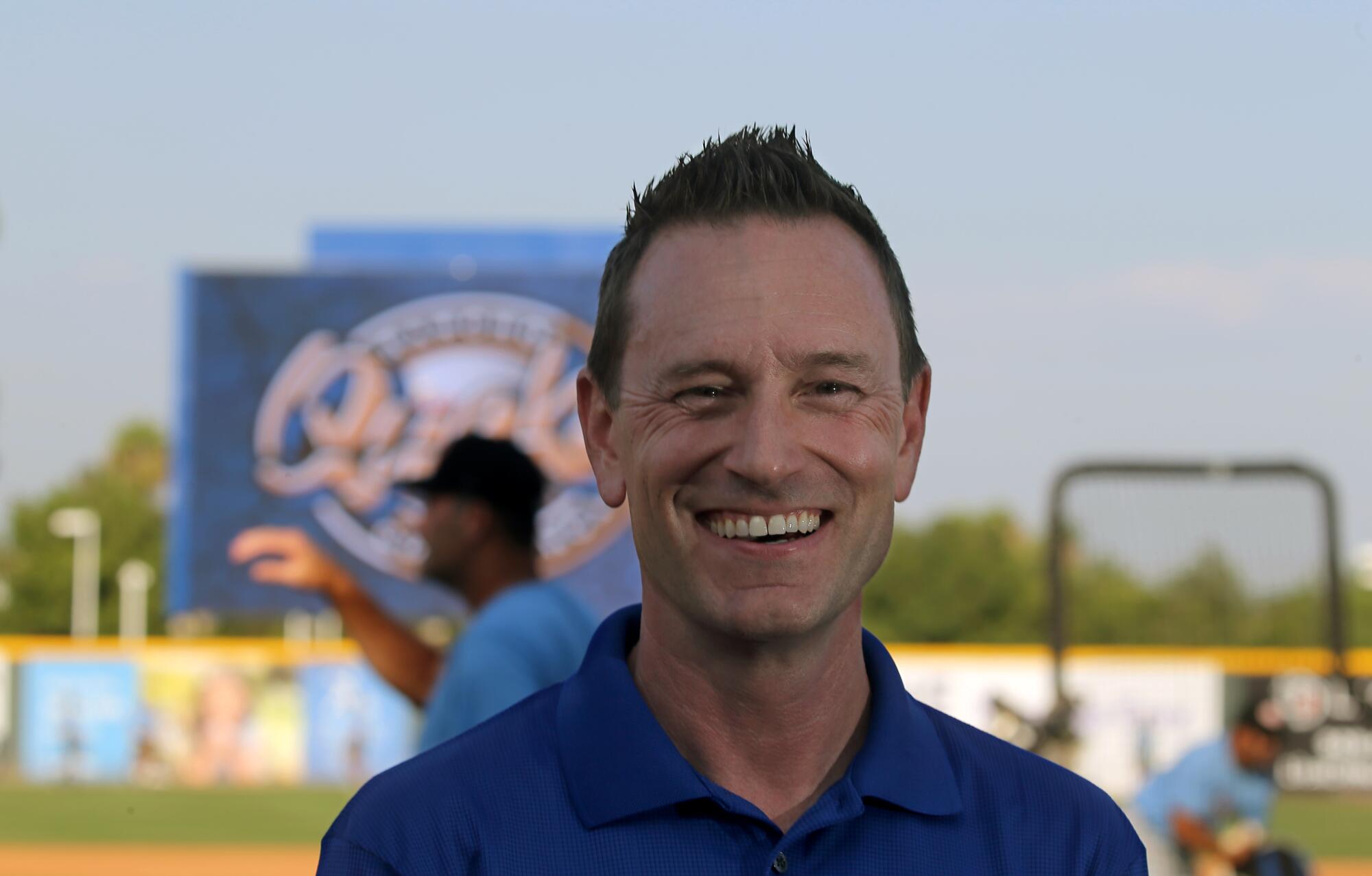
7 a.m.: Crushing data and breakfast
As I’m putting my son’s breakfast together downstairs, I’m on the computer, crushing data and putting together the daily stat packs for the coaches. I’m writing about today’s game, how we play against the opponent, what happened during the last game, who’s playing well on the team, today’s starting pitchers for both teams. You’ve got the stats, the standings, everything you need, and then I send them out so that by the time team officials wake up it’s already in their inbox.
8 a.m.: Getting ready for a special week
I take my kid to school at 8 o’clock and then come home and get ready for the day. This week is special. It’s the playoffs. We play 132 games a season, and it’s hard to get up for every one. But this is the playoffs, best of three, and we were shut out in Game 1. We’re playing the Inland Empire 66ers ball club. It’s part of the Angels organization, so it’s a natural rivalry.
Van Nuys-based astrologer and witch Gogo Akopyan promises to tell you about your past, present and future. But first: coffee, stirred clockwise, with intention.
10 a.m.: You can’t tell the player without a program
I’m responsible for putting together the team game day program as well, so there’s a fair amount of work that goes into that. That’s a printed edition that requires a little bit of time and effort. It’s a new feature for each and every home stand. So when fans come to the game, they get to read some features about the players. I actually have an assistant that does a fair amount of the writing, but it’s my responsibility to put it all together, edit it, physically get that off to the printer. So all of that stuff takes some time.
1 p.m.: Getting to the ballpark
I check in with both coaches, make sure they’re squared away as far as any statistical things or if they have questions regarding the other team or roster moves or anything of that nature. We’ve got a professional scout in the stands tonight, so I’ll go talk to him. He’s Jeff Ishii with the St. Louis Cardinals. Met him when I was briefly working for the Cardinals.
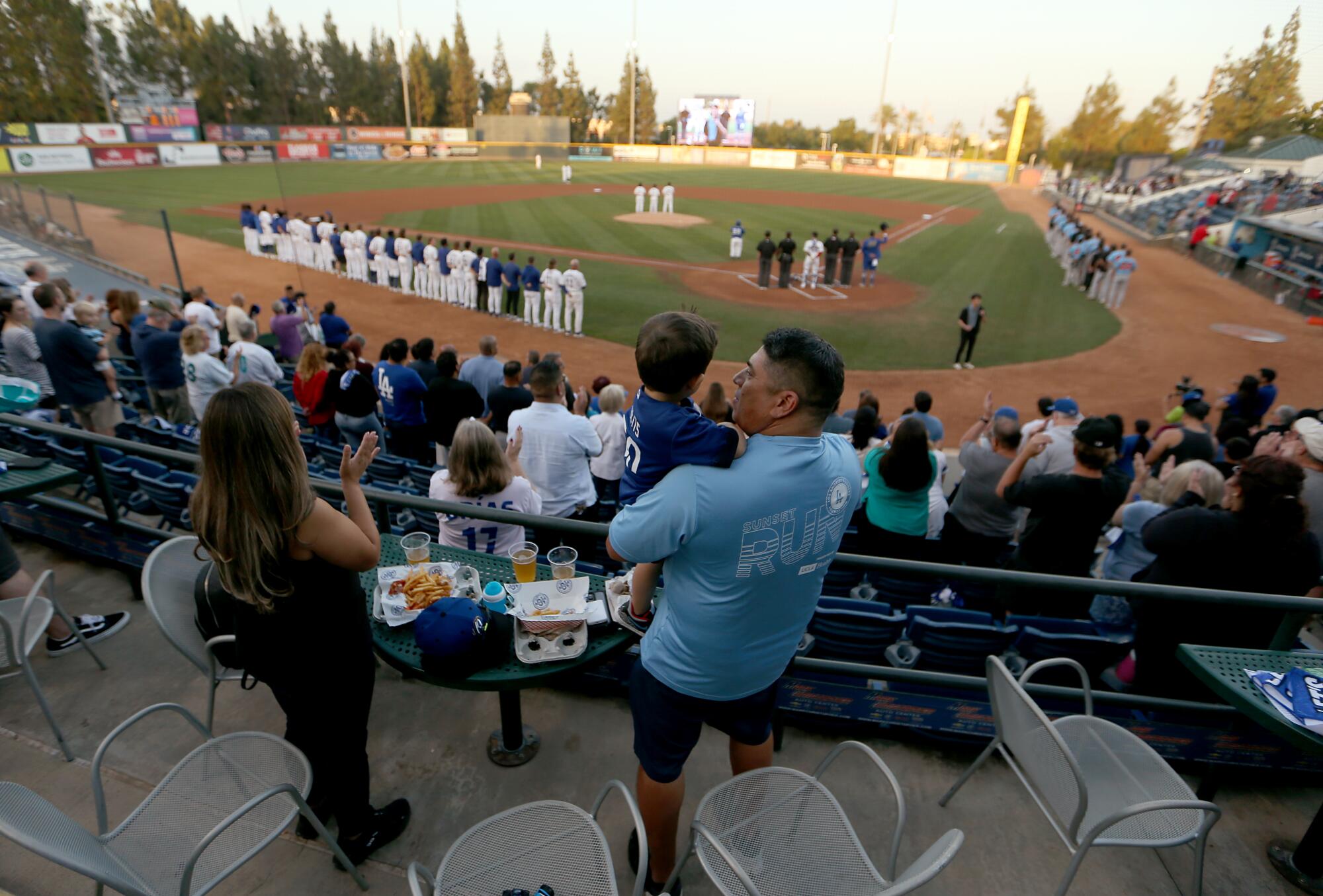
3 p.m.: Swinging by batting practice
Eventually I’ll make my way kind of past our batting practice, and on a good day if I’ve got time, stop at the cage for a minute and again, check in and just kind of maybe give somebody on the Quakes a fist bump and a pat on the back for a job well done the night before. We used to be “High A” and the players were grown men. Now we’re “Low A” and they are 17, 18, 19 years old. I was more comfortable talking to the older guys. It’s harder for me to relate at this level because there’s a 30-year age difference. And they don’t need to worry about the radio guy hanging around.
Art restorer Henri Laborde will repair art from Sotheby’s, Christie’s — and your living room shelf. Here’s how he stays focused on the delicate work.
4 p.m.: Getting the scorecard ready
I’m filling out my scorecard for the game. The scorecard is like minutes for a court reporter. I’ve got my own shorthand for this. You want to know what happened two innings ago? It’s a language baseball people speak. A 4-3 ground-out means that the batter hit a ball to the second baseman who threw the ball to first base. Allows me to reflect quickly when the same batter is up again later in the game.
5 p.m.: Getting into game mode
I’m locking in, getting ready to go. At 6:15, we’re on the air and it’s literally just flip the switch and go into game mode. I’m very high energy, talk fast, think fast. This is an elimination game. For me, it’s so abrupt. The season is either about to come to a screeching halt, or we win and come back to do it again tomorrow. So I’m telling everyone, “See you tomorrow” meaningfully, because of course we’re going to win.
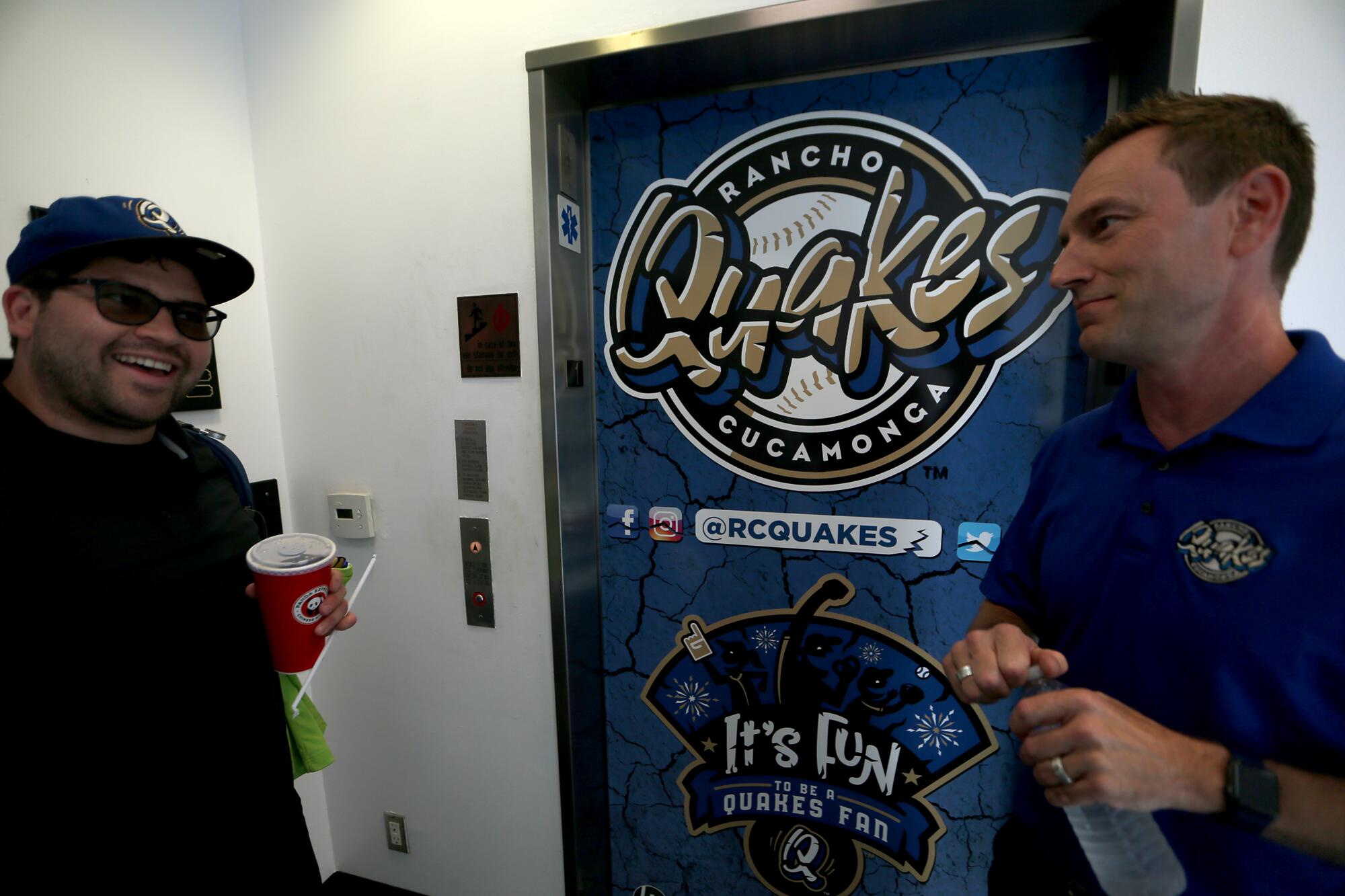
5:50 p.m.: Keeping the fans happy
It’s 25 minutes before I go on the air, and there’s a fan at the broadcast booth window telling me he’s not getting team emails anymore. Why isn’t he on the email list? I tell him to send me his email address and I’ll make sure he’s in the database. But he’s upset. He’s a season ticket holder, so he has to go through it all again. I’m going to make him feel better.
As a meteorologist, Rose Schoenfeld’s job is to keep the public informed of severe weather. For her and her colleagues, Hurricane Hilary is ‘a once-in-a-lifetime kind of event.’
6:10 p.m.: Sound check before airtime
Inside Lindskog’s tidy broadcast booth, his voice doubles in volume as he gears up. He leaves the window open as far as it goes to hear the game and get an unfiltered feel for the stadium. There’s a Keurig coffee machine sitting untouched in a lonely corner of the booth. The last thing Lindskog seems to need is caffeine.
“The main objective is to just bring high energy to the table to make it fun for the fans.”
— Mike Lindskog, Rancho Cucamonga Quakes broadcaster
It’s five minutes before airtime. I’m making sure my sound is good. I have a standard mixer. It’s got four channels. No. 4 is for my microphone. No. 1 is the crowd microphone, for background noise, ambience and such. No. 2 is a spare microphone. No. 3 is if I have a guest in the booth. I’m an energetic person. I mean, obviously I’m not just sitting there going through the motions of the slow and “the one-one pitch, that’s outside, it’s two and one.” That’s not really my speed at all, which isn’t necessarily for everybody as well. Sometimes it doesn’t always come out the way I intend, but the main objective is to just bring high energy to the table to make it fun for the fans.
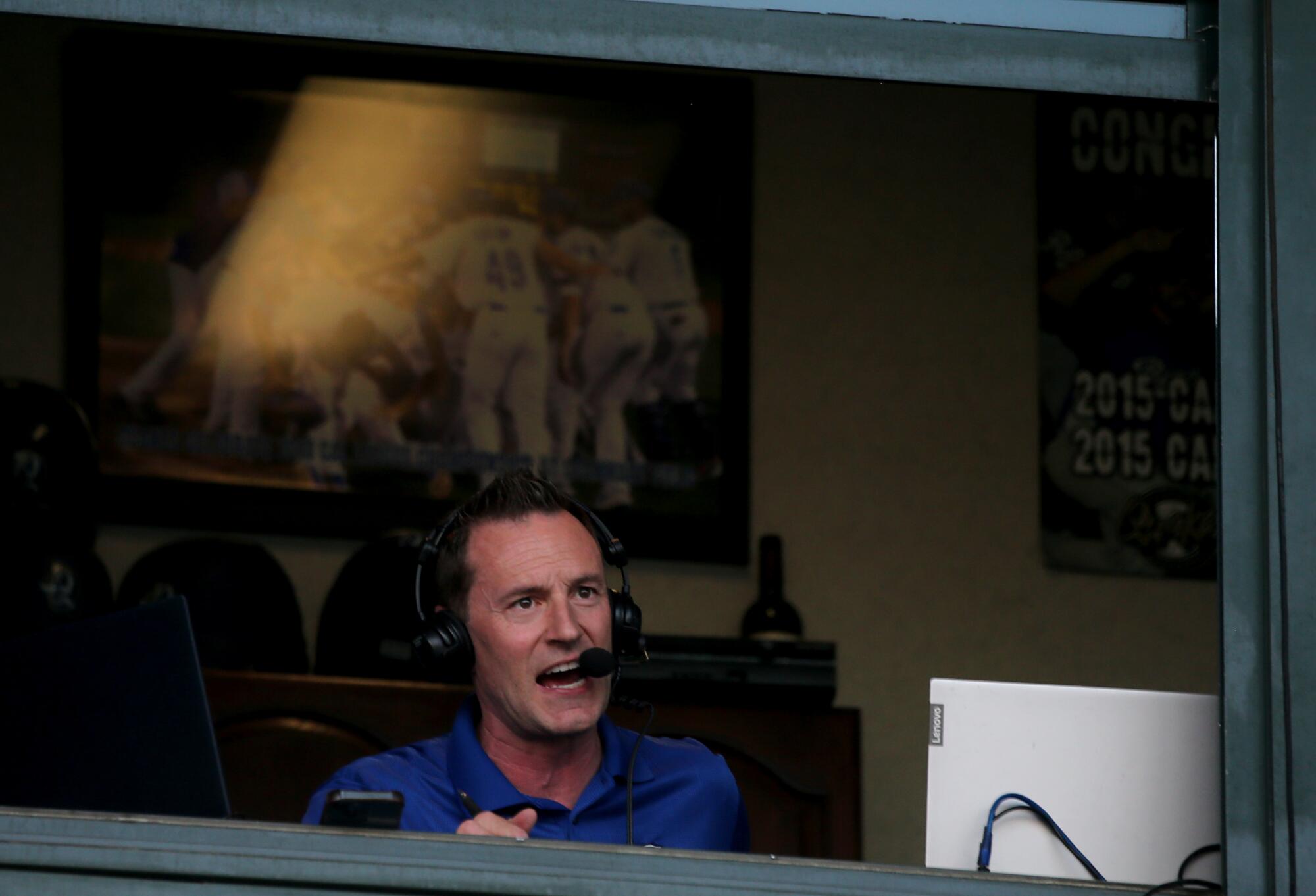
8:46 p.m.: Down to the wire
Lindskog can’t stay in his seat anymore. He’s on his feet, bouncing occasionally. His neck is red. The veins are out.
The Quakes are clinging to a one-run lead, 4-3, with two outs in the top of the ninth inning. The tying run is at first base. The go-ahead run is the batter at the plate. The pitch, and it’s wild, all the way to the backstop. The runner moves to second. Now all the Inland Empire needs is a hit. Another wild pitch, so high and wide it didn’t even register on the speed gun. The tying run’s now at third. Two more walks and the bases are loaded.
8:49 p.m.: Calling the final pitch
Lindskog is feeling the drama, feeding on it. The Quakes pitcher throws three straight balls. The next two pitches are a called strike and a foul ball.
Well, this is it. There’s not a soul sitting down here in LoanMart Field. It’s a full count, three balls and two strikes. 4-3 Quakes. Trying to get to Game 3 on Friday night. The pitch. 3-2 on the way. Fastball. Batter caught taking a look. It’s a strike. Friday! Friday! Friday night! Shut the door! I will be here! You will be here!
The Quakes, by the skin of their teeth, hang on, 4-3! The series is tied at one apiece! They fought and they fought and they finally held on. Game 3 on Friday night! We will be here, and I sure hope you will be too.
The next day, Sept. 15, the Quakes beat the Inland Empire 66ers, advancing to the Cal League Championship Series, where they were swept in the two-game finals by the Modesto Nuts.
More to Read
Inside the business of entertainment
The Wide Shot brings you news, analysis and insights on everything from streaming wars to production — and what it all means for the future.
You may occasionally receive promotional content from the Los Angeles Times.
